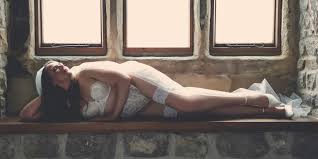Mastering the Art of Boudoir Lighting: A Guide to Captivating Intimacy
Boudoir Photography is an exquisite genre that celebrates sensuality, confidence, and intimacy. The key to creating stunning boudoir images lies not only in the choice of poses and composition but also in the art of lighting. Boudoir lighting, when wielded skillfully, has the power to accentuate the subject's features, evoke emotions, and create an ambiance of allure. In this guide, we'll delve into the world of Boudoir Lighting techniques, exploring how they can transform a photoshoot from ordinary to extraordinary.
Understanding Boudoir Lighting
Boudoir Photography revolves around capturing the essence of a person's inner confidence and beauty in a subtle yet captivating manner. To achieve this, lighting plays a pivotal role. Proper lighting enhances contours, highlights, and shadows, adding depth and dimension to the subject's features. By understanding the fundamentals of light, photographers can manipulate its qualities to produce stunning images.
1. Natural Light:
Natural light is a boudoir photographer's best friend. Its soft and diffused qualities make it ideal for creating a flattering and delicate atmosphere. Large windows, sheer curtains, and diffusers can be used to control the intensity of sunlight and create a dreamy ambiance. The changing light throughout the day provides photographers with a range of opportunities to experiment and capture different moods.
2. Window Light:
Utilizing window light effectively involves placing the subject near a window, allowing the soft light to fall gently on their form. The sheer curtain or a sheer fabric can be used as a natural diffuser to soften the light even further, reducing harsh shadows and providing a flattering glow. This technique accentuates the subject's contours while maintaining an intimate feel.
3. Artificial Light:
Artificial Boudoir Lighting, such as continuous lights or strobes, offers photographers more control over the lighting environment. This option is especially useful in situations where natural light is limited or requires enhancement. Softboxes, beauty dishes, and diffusers can be employed to mimic the gentle qualities of natural light while sculpting the subject's features.
4. Backlighting:
Backlighting involves placing the light source behind the subject, creating a halo-like effect around their silhouette. This technique adds a sense of mystery and sensuality, with the subject's form subtly outlined by the soft glow. Backlighting can be achieved using natural light, placing the subject in front of a window, or using artificial lights strategically.
5. Rembrandt Lighting:
Named after the famed Dutch painter, Rembrandt lighting involves placing a single light source at a 45-degree angle from the subject, slightly above their eye level. This technique results in a triangle of light on the cheek opposite the light source. It adds depth and dimension to the subject's face, creating a classic and alluring look.
6. Butterfly Lighting:
Butterfly lighting, also known as paramount lighting, is achieved by placing the light source directly in front of the subject and slightly above their eye level. This creates a small shadow under the nose, resembling a butterfly's wings. This technique emphasizes the subject's facial features while maintaining an elegant and captivating mood.
Conclusion
Mastering Boudoir Lighting is an essential skill for photographers seeking to capture the beauty and intimacy of their subjects. Whether using the gentle touch of natural light or the controlled precision of artificial lighting, understanding how to manipulate light can elevate boudoir photography to new heights. Remember, boudoir lighting is not just about illuminating the subject; it's about evoking emotions, creating an ambiance, and celebrating the unique qualities that make each individual shine. So, embrace the art of boudoir lighting, and let your creativity illuminate the path to breathtakingly beautiful images.
Visit website now - KTS Boudoir Magazine.
.jpeg)
.jpeg)
.jpg)
.jpg)

Comments
Post a Comment